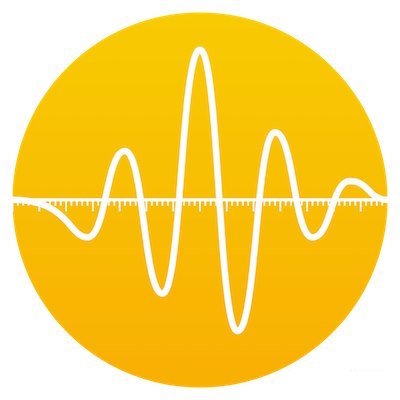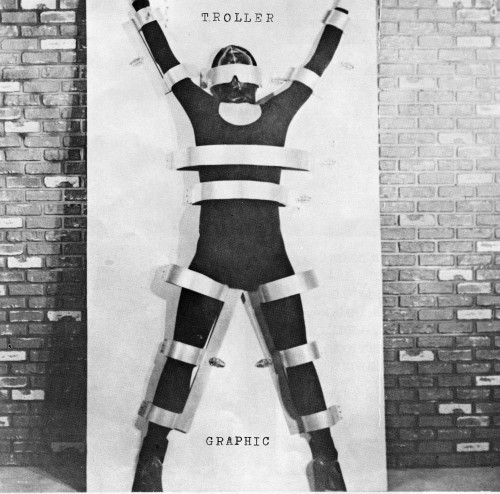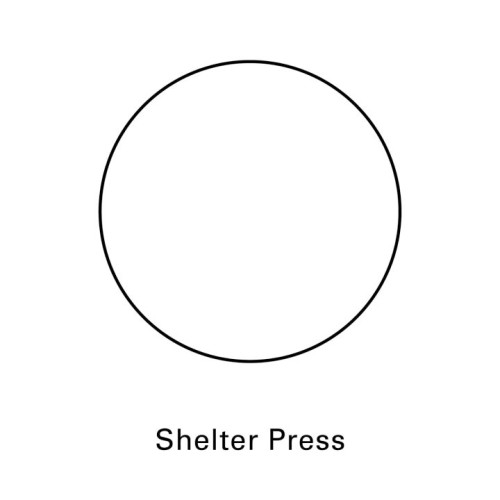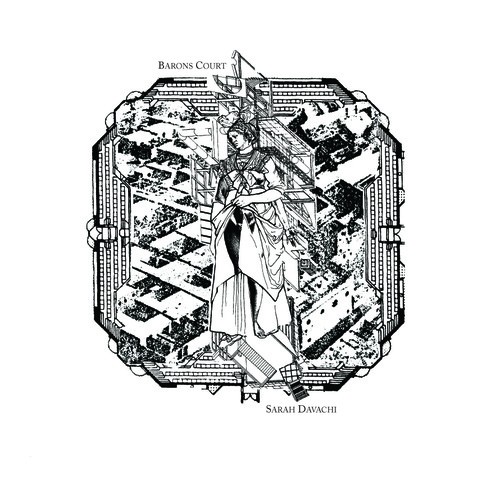I loved iTunes. Up until pretty recently, too. But you know what? Fuck iTunes. What used to be the most intuitive and seamless experience has turned into a glitchy piece of shit that freezes whenever I try to do something as simple as search for a record or play a song. It won’t let me do anything quickly, which is both iTunes’ and my fault, though. My music library lives on an external FireWire hard drive and is roughly 1.5 TB, which is admittedly pretty fuckin big. But decent software should be able to handle this; iTunes can’t because it’s bloated, trying to be a comprehensive media manager & store. I know others have jumped ship well before me and there are tons of other articles about the why and how, but I haven’t seen too many address the biggest issue I’ve had: a huge, cumbersome music library. So that’s what I hope to do with this post, let you know where I was, where I’m at now, and why I’m much happier.
My previous setup was pretty straightforward. My (2011?) Macbook spent most of its time sitting plugged in at my desk where it could be connected via FireWire to my Western Digital MyBook Studio 3 TB external hard drive. The hard drive had both my digital music as well as the iTunes library and database files. Eventually I got fed up and started looking for other software & storage solutions. So many people had recommended getting a NAS (network attached storage) setup, so that seemed like the next obvious move for storage. Software was a bit more problematic, because as most of you probably know, there’s not a whole lot of decent iTunes alternatives out there, especially for Macs. I did tons of research on which NAS brand/model to buy and the software that would replace iTunes, and ended up with this:


Storage: QNAP TS-251 NAS (Intel Celeron 2.41GHz, 8 TB (2 x 4 TB), 4GB RAM) – $669
Software: Swinsian – $20
Why the QNAP TS-251 & Swinsian?
There are tons of reasons why you might prefer a NAS over a straight external hard drive, but the big draws for me were being able to access the content anywhere (anywhere at home, anywhere away from home) and not having to worry about my external hard drive dying and having to buy a new drive and restore my cloud backups, which is a a huge stress and a major pain in the ass.
The big debate seems to be between QNAP or Synology for your NAS brands. I opted for QNAP because of this review and lots of recommendations. I knew I wanted 2 hard drive bays so I could run a RAID system which allows the two drives to mirror each other without any extra work on my part. This means when one drive has a little glitch or if a file gets corrupted or anything like that, the QNAP will replace the broken info on one drive with the good stuff on the other drive. I wanted a decent amount of RAM and not an Intel Atom processor because I plan on streaming movies off of the QNAP in the near future as well. Which is also why I chose to get a model with an HDMI output, which is not a common feature. I wanted 4 TB of storage because that gives me a little room to grow from my 1.5G TB music and less than 1 TB of video, and I chose to buy the drives pre-installed because buying just the empty NAS case and then getting the drives separately ended up costing about the same. Lots of other nice stuff about this model, too, like hot-swappable drives. Depending on what you’re doing, you can get away with a much cheaper model than what I got.
Swinsian was the only software I actually downloaded and tried out. The rest of the stuff I looked at from a distance via reviews and such, and that’s because I could tell just from reading that so many of the other apps wouldn’t suit my needs. I wanted something that looked visually similar to iTunes (namely, being able to browse by album artwork), I wanted to be able to stream content via AirTunes/AirPlay, I wanted to be able to sync my iPod Classic, and ideally, I would be able to import my iTunes data so I wouldn’t lose play counts, playlists, and the like. Swinsian does all of this, and it claims it’s “designed to be responsive even with the largest libraries.” It’s one of the few apps that costs a decent amount of money ($20) but it comes with a full featured 30 day trial, so I didn’t have to drop the money blindly.
Setting Up
Setting up the QNAP was pretty much as easy as taking it out of the box and turning it on. I had some weird network issues that were unrelated to the QNAP but eventually got things running and accessible via my Macbook. QNAP has a nice web interface where you can do everything from file and sever management to running apps and stuff. After the initial setup, I plugged my external hard drive directly into the QNAP via USB and copied over the entire contents using QNAP’s web file manager. I had some errors when copying which I’m 99% sure were due to insanely long file names/paths. I ran some queries on my external hard drive to identify the extra long ones, then I edited them down, and was successful in copying everything over to the QNAP.
To test things out, I tried running iTunes from the QNAP over wifi. Since my previous setup involved storing my library & database files on the external hard drive (instead of on my Macbook), I did the same with the QNAP. Shit results. Moving the library & database files to my Macbook but keeping the media on the QNAP resulted in better performance, but still worse than when I was running everything from my external. But at least everything was working.
Next was setting up Swinsian to work with the QNAP. This is where shit got crazy. Like I mentioned before, Swinsian has the option to import your iTunes library so you can retain iTunes specific metadata. I tried this and it seemed to go ok. It didn’t take very long (still, multiple hours) to import the library XML (side note: if you don’t have an iTunes library XML file because you’re using the newest version of iTunes, which changed from XML to ITL files for its library/database, you can easily & quickly export your library as an XML file in iTunes to import in Swinsian, which will only import an XML). However I quickly realized some of my music was unavailable. When I had Swinsian reveal the file in Finder, it was looking for my external hard drive. Apparently iTunes was still using some of the music on the external hard drive instead of the QNAP. I have no fucking clue why this happened.
My first (unsuccessful) step to resolve this was to go back into iTunes and consolidate my library so iTunes would know all the music was on the QNAP. My library was too big for this to work, it kept hanging, crashing, and throwing errors. So I said fuck it, I don’t need my iTunes specific data, I’ll start over and just have Swinsian scan the QNAP directories for my music. This took forever but eventually looked like it was finished scanning. It wasn’t. Swinsian was showing songs in the library with no ID3 tags save for the mp3 filename, it wouldn’t play those songs (they had a running time of 00:00), and it wasn’t showing everything. I tried this QNAP directory scan a couple times to make sure it wasn’t just Swinsian. It wasn’t just Swinsian (although I think it was part of the problem). Apparently the files from my external hard drive didn’t get copied over to the QNAP properly the first time I was setting it up (even though I’m fucking certain they did). So I connected the external drive to the QNAP and repeated the copying process, choosing to skip files with the same filename. I had Swinsian scan the QNAP again and still ran into problems, so once again, I said fuck it. I returned to iTunes, but instead of working with my same library as before, I created a new library by pointing iTunes at the QNAP. That way I had a library file that knew where all my music was. I imported that XML library to Swinsian, and finally have non-iTunes software that can access all my music on my NAS.
All of that scanning and importing and copying took a fuckton of time. I typically would let something run overnight when I knew I wouldn’t be using my music the next day. At most, I think a scan/import/etc took less than 24 hours with a wired ethernet connection.
Speaking of wired connections, once I realized my wifi was garbage, I decided I needed to connect everything directly (Macbook -> router, router -> NAS). That’s not to say you can’t do this wirelessly. I’m pretty sure some weird shit is happening in my home which is a combination of old busted routers and every type of signal interference you can think of. So your mileage will absolutely vary.
Playing with Swinsian
I’m way into this app. It’s super fast. Like, super fast. None of the lagging jumpy glitchfest that is iTunes. Searching is a breeze, everything happens more or less instantaneously. That bit about being responsive with even mega-massive libraries is 100% true. Editing tags is the best. Again, it’s super quick & easy, especially if you have the tag editor frame open all the time (which is a killer feature). It supports Regex, which is a ridiculously robust search and replace function that has a decent learning curve, but when you don’t have Doug’s AppleScripts anymore, you’re probably going to want to take advantage. Swinsian basically does everything you used iTunes for: album art fetching, smart playlists, Last.FM scrobbling, gapless playback, AirTunes/AirPlay streaming, etc. It also does lots that iTunes couldn’t do, like support for FLAC and multiple genres (!!!).
However, Swinsian isn’t perfect (yet). I do have some complaints…
-AirTunes/AirPlay streaming only allows streaming to one AirPlay device at a time, which sucks when you have 2 or more AirPlay devices. Not only that, but when Swinsian is streaming to AirPlay, it doesn’t even play the music back locally! That’s some stupid shit.
-Swinsian doesn’t use any of the Sort ID3 tags that iTunes used. This is a huge fucking blow considering how much time I spent and how many files I have that use those fields. That means if you want to sort by artist’s last names, or if you have artists that use weird punctuation, you’re fucked. It can’t even handle the preceding periods in “…And You Will Know Us By The Trail Of Dead.” This will take some major re-evaluating of my cataloging practices, which I’ve already spent plenty of time evaluating.
-It doesn’t handle iOS devices, so iPhones, iPads, and newer iPods still need to be synced with iTunes (although this isn’t a problem for me because I don’t put music on my iPhone, and my iPod is an iPod Classic, which Swinsian can handle).
-Swinsian doesn’t rip CDs. Not a huge problem. Other software, like XLD, is fine for this.
-I exported my playlists from iTunes and imported them (and recreated the smart playlists) in Swinsian, so I didn’t loose that info, but play counts, date added, and a lot of other metadata that I relied on in iTunes is gone. This isn’t a complaint on Swinsian features, more about its inability to scan 1.5 TB of music accurately.
So yeah, these things suck, but they’re sacrifices I’m willing to make because of how dysfunctional iTunes became for my purposes.
Epilogue
Absolutely without a doubt worth the effort to toss the bogus bloated Apple mess and unreliable external hard drives for a fast, stable, and accessible Swinsian/NAS setup. Anyone can do this, and should if you have an unwieldy music collection.
While setting stuff up, I went back and forth a hundred times between iTunes and Swinsian. Just when I thought I had shit under control, something else went wrong and I had to revert to iTunes. This was a huge time suck because my libraries got out of sync between apps and it got really hard to keep track of. So a really important tip is to make note of the exact size of your library in a variety of ways (number of songs, number of albums, number of GB, etc.), that way when you get Swinsian loaded up, you can make sure you’re not missing anything.
I haven’t spent a ton of time with Swinsian yet. I’m sure there will be more things I run into that I love/hate the longer I use it. But I also am convinced that it will get better over time, instead of getting worse like iTunes.
I wrote all of this from memory. I didn’t plan on writing this post until after I finished everything and some folks were like “tell me what you did!” So there’s probably parts of this process that aren’t chronological or slightly inaccurate. Sorry!
I’m happy to talk more about this. I glazed over plenty (like how to make a new iTunes library) because I figured you could Google anything you didn’t know. If you have questions or anything like that, comment or email or Twitter or whatever.












